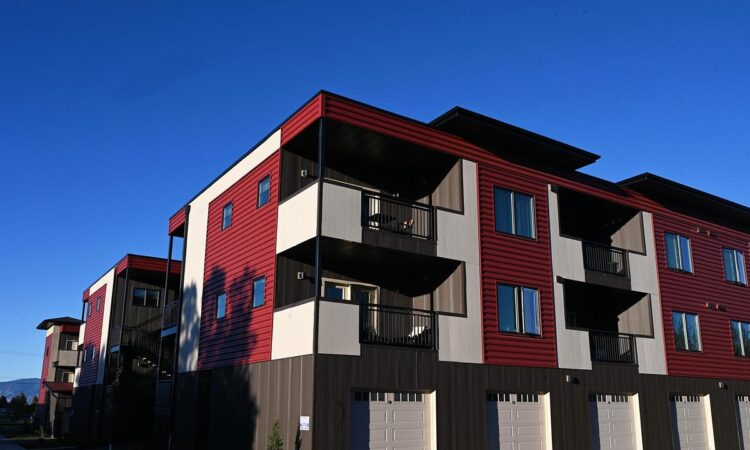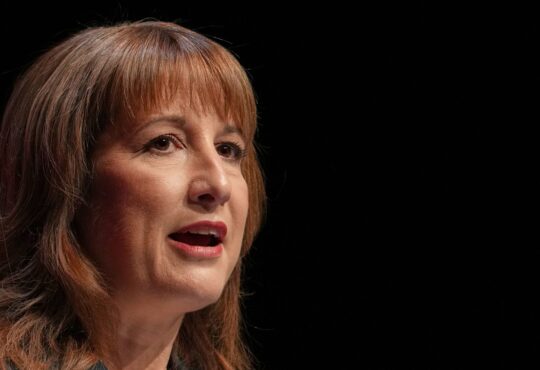
The most expensive race on a Montana ballot this fall isn’t about candidates; it’s about water and rent in one of the state’s most expensive communities.
Spending on Bozeman’s Water Adequacy for Residential Development initiative, or WARD, is expected to hit $200,000 by month’s end, with most of the money coming from building and real estate organizations that say the measure will deliver the exact opposite of what petitioners promise.
Simply put, WARD retools the City of Bozeman’s 40-year-old cash-for-water-access program. Currently, developers pay into a fund used by the city to buy the additional water rights necessary to serve its burgeoning number of taps.
The WARD initiative would require that developers paying into the program sell or rent 33% of their units at prices affordable to families earning 120% of Bozeman’s area median income, or AMI. It’s an affordable housing standard used by the Federal Housing Administration. For rental units, the affordability would be 60% of AMI, or $49,980 for one person, $71,400 for a family of four.
The election’s biggest spender is the “Affordable Bozeman Coalition,” which opposes the WARD initiative. Financial reports show building and real estate organizations fueling the campaign. The Southwest Montana Building Industry Association started the committee with a $100,000 donation in August and is now up to $120,000. The Southwest Montana Realtors have also contributed $100,000. Earlier this month, the Bozeman Area Chamber of Commerce donated $25,000.
“Higher prices, higher taxes, fewer jobs,” cautions one group’s current online placement ads. Offered an interview for this story, Affordable Bozeman Coalition President Riley Rivers, a landscape contractor, submitted a statement.
“The Affordable Bozeman Coalition is committed to ensuring Bozeman voters have the facts about the Water Adequacy for Residential Development (WARD) initiative before casting their ballots. We’ve dedicated significant resources to this effort because the WARD initiative poses an existential threat to Bozeman’s housing market, local trades workers, taxpayers, and the broader economy.”
Finance reports for the committee show a sophisticated campaign drawing expertise from Washington, D.C. The mailers were designed by Plus Communications, a public relations firm with a roster that includes counsel Chris LaCivita, senior adviser and co-campaign manager to President Donald Trump’s 2024 campaign, and several veterans of large Republican congressional campaign funding organizations.
Messaging has been done by text, mail and digital advertising.
The promoters of WARD are running on more of a bare budget.
“So, I’m the treasurer for WARD working group. I can give you the numbers,” said Dan Carty of initiative backer WARDBZN. “From 2024, the total donations were, I’ll give it to you to the nearest hundred, $1,100. In 2025, our total donations will be $7,300, our total expenditures are $5,800.”
Most of the WARD group’s money went to Montana State University students who were paid $25 an hour to gather signatures to qualify the initiative for the ballot. The group relies on letters to the editor of the Bozeman newspaper to make their arguments for passing the initiative. Carty, a biologist by trade, said volunteers also do a lot of “informational tabling,” meaning they staff a table wherever there’s public property and the crowd, like local farmers’ markets.
Bozeman Mayor Terry Cunningham said he isn’t surprised that spending in the WARD initiative election eclipses the spending in the mayoral races for Montana’s largest cities. Bozeman’s candidates for mayor have spent less than $20,000 combined. The four-way race for mayor in Billings hasn’t hit $100,000 in combined spending. Some view the outcome of the WARD election as more impactful on Bozeman’s future than who the next mayor will be.
“It’s probably indicative of what the perceived stakes are for the WARD initiative, for the impacts on housing, the impacts on the economy,” Cunningham said.
The City of Bozeman has spent $50,000 on an informational campaign about its program for acquiring water rights and what changes it thinks WARD would bring to the program.
Cunningham likens the housing affordability thresholds in WARD to an amusement park ride requirement that people no shorter than 8 feet tall be allowed to ride the Ferris wheel.
“If you set a threshold that is unachievable, it’s a de facto moratorium on residential development in the city,” Cunningham said. “And if the thresholds are not achievable because of the high cost of land, lumber, labor and lending, then we are forcing development into parts of the county that are developed at much less density, which chews up a lot more land and generally puts those developments in areas that are accommodated by well and septic. We have a huge septic problem in the county.”
Opposition to the initiative has created odd coalitions, Cunningham said. Realtors, developers, tenant groups and Forward Montana, a young voter engagement group, have been actively raising awareness about the initiative before voting ends Nov. 4.
Editor’s note: Bozeman mayoral candidate and WARD initiative backer John Meyer is married to MTFP reporter Amanda Eggert. Eggert had no involvement with this piece.
latest stories
Missoula’s quandary: where do the tax dollars go?
City leaders tout Missoula’s TIF program as one of the most successful in the state, saying it has helped revitalize areas lacking new development and created amenities for the community. Some city council members and candidates argue the program needs more oversight and should be scaled back to lessen the burden on taxpayers, schools and other public services.
Jeff Welborn becomes PSC’s new president in 3-2 vote
Jeff Welborn, who joined the Public Service Commission in January, is taking the helm of the state’s utility board from Brad Molnar.
Nurses, doctor sue Montana recovery program in class-action lawsuit
A group of Montana doctors and nurses is suing the national company that runs a rigorous, often mandatory monitoring program for health care providers struggling with addiction. The case is the latest instance of public criticism about how the state-mandated program for more than 60,000 medical licensees is operating.






